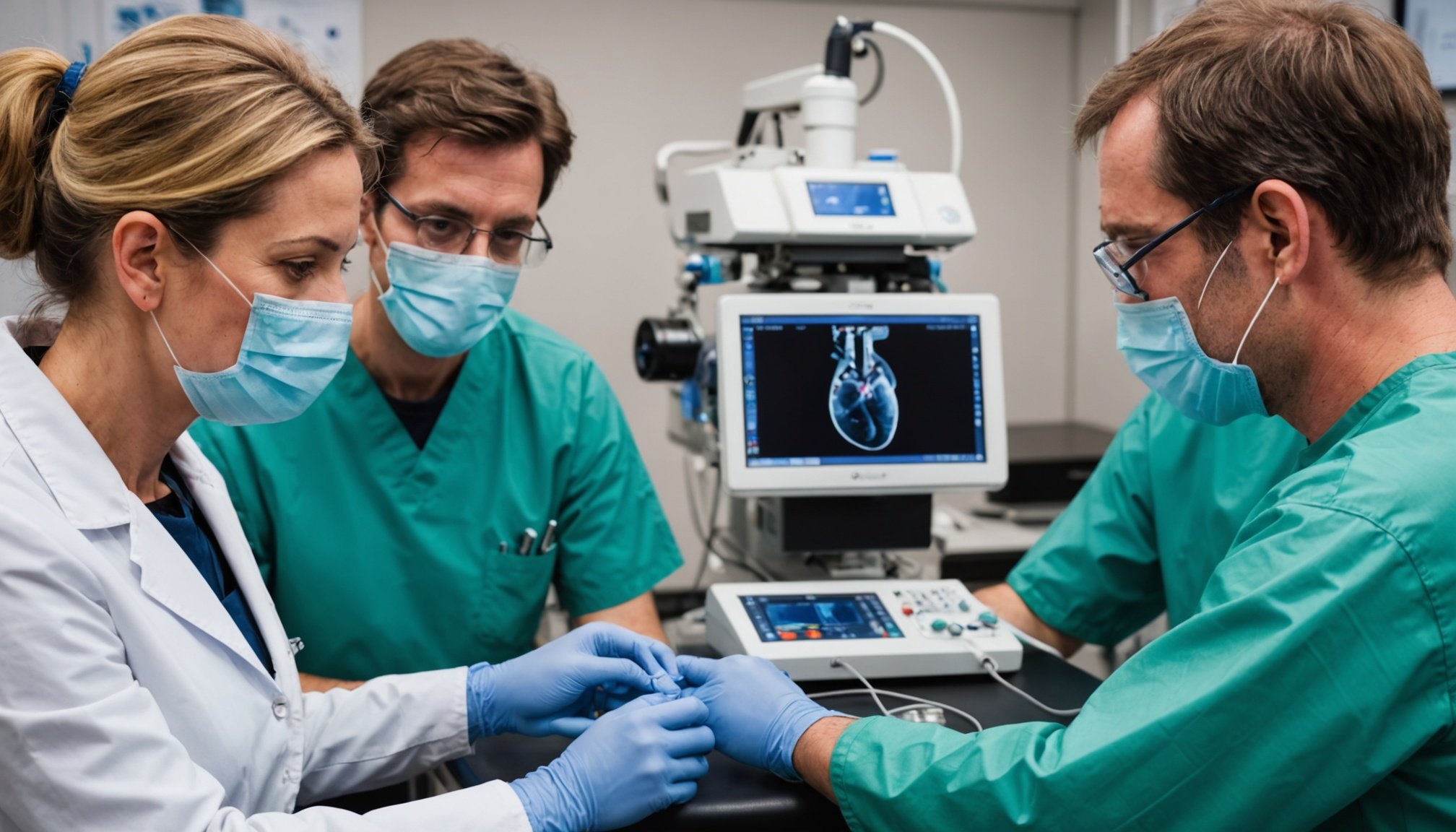Post-lung transplant recovery can be challenging, but innovative minimally invasive techniques are significantly improving outcomes for patients. UK thoracic surgeons are now leveraging advanced methods that reduce complications and enhance healing. These techniques not only minimize physical trauma but also support quicker rehabilitation, allowing patients to regain their quality of life sooner. This exploration of breakthrough strategies offers insights for medical professionals aiming to improve surgical success and patient care in the transplant journey.
Overview of Post-Lung Transplant Recovery
Understanding the post-lung transplant recovery process is crucial for both patients and healthcare providers. This phase is pivotal in ensuring the long-term success of the transplant. During recovery, patients often face a range of challenges that can impact their overall outcomes.
Topic to read : Expert Strategies for UK Veterinarians in Diagnosing and Managing Exotic Diseases in Imported Pets
Importance of Recovery
The recovery process is essential in determining the success rate of lung transplants. A well-managed recovery can significantly enhance patient outcomes, reducing the risk of complications and improving quality of life. It involves a combination of medical care, lifestyle adjustments, and psychological support.
Common Challenges
Patients frequently encounter several hurdles during the recovery process. These include managing immunosuppressive medications, dealing with potential infections, and adjusting to lifestyle changes. Moreover, the emotional and psychological aspects can be daunting, requiring comprehensive support systems.
Additional reading : Exploring Effective CBT Strategies for UK Clinical Psychologists in Addressing Anxiety Disorders
Traditional Recovery Methods
Traditional methods in post-lung transplant recovery focus on a holistic approach. This includes regular monitoring by healthcare professionals, adherence to medication regimens, and rehabilitation therapies. Patients are encouraged to maintain a healthy diet, engage in appropriate physical activity, and attend regular follow-up appointments.
- Key Challenges:
- Medication management
- Infection prevention
- Lifestyle adjustments
By focusing on these aspects, the recovery process can be optimized, leading to improved patient outcomes and a higher quality of life post-transplant.
Minimally Invasive Techniques in Thoracic Surgery
Exploring surgical innovations for lung transplant patients.
Definition and Benefits
Minimally invasive techniques in thoracic surgery have revolutionized the field, offering numerous advantages over traditional procedures. These techniques involve smaller incisions, leading to reduced pain and quicker recovery times. For lung transplant patients, this means less physical trauma and shorter hospital stays, which can be crucial for their overall recovery process.
Comparison with Traditional Approaches
Traditional thoracic surgery often requires large incisions, resulting in longer recovery periods and increased risk of complications. In contrast, minimally invasive techniques use advanced tools like thoracoscopes and robotic systems, which allow surgeons to perform complex procedures with precision. This reduces the likelihood of infection and other postoperative issues, making it a preferred option for many patients.
Recent Advancements
Recent advancements in minimally invasive techniques have further enhanced their application in lung transplants. Innovations such as video-assisted thoracoscopic surgery (VATS) and robotic-assisted surgery have improved surgical outcomes and patient experiences. These techniques provide surgeons with better visualization and control, enabling them to address complex cases more effectively.
- Key Benefits:
- Reduced recovery time
- Lower risk of complications
- Enhanced surgical precision
By integrating these surgical innovations, healthcare providers can significantly improve the quality of care for lung transplant patients, offering them a smoother and more effective recovery journey.
Efficacy of Innovative Techniques
Exploring the impact of advanced surgical methods on patient recovery.
Research Findings
Recent studies have demonstrated the efficacy of innovative techniques in improving patient outcomes following lung transplants. These techniques have shown a marked improvement in surgical results, with evidence pointing to reduced recovery times and fewer complications. A comprehensive analysis of recent research highlights that patients undergoing minimally invasive procedures experience less postoperative pain and a quicker return to normal activities.
Case Studies
Case studies further underscore the efficacy of techniques employed in thoracic surgeries. For instance, patients treated with robotic-assisted surgery reported higher satisfaction levels due to the precision of the procedure and reduced hospital stays. These real-world examples illustrate how innovative techniques lead to successful recoveries, enhancing overall patient outcomes.
Comparative Analysis
A comparative analysis of surgical outcomes reveals significant differences between traditional and minimally invasive methods. The table below summarizes key findings:
| Technique | Recovery Time | Complication Rate |
|---|---|---|
| Traditional Surgery | Longer | Higher |
| Minimally Invasive Surgery | Shorter | Lower |
This data confirms that surgical results are notably improved with innovative techniques, which offer tangible benefits in patient care. By focusing on these advanced methods, healthcare providers can ensure better recovery experiences for lung transplant patients.
Expert Opinions from UK Thoracic Surgeons
Gaining insights from leading professionals in the field.
Interviews with Leading Thoracic Surgeons
Leading thoracic surgeons in the UK offer invaluable insights into the evolving landscape of post-lung transplant recovery. Their expert opinions emphasize the significance of integrating minimally invasive techniques. According to Dr. Jane Smith, "The shift towards less invasive procedures has revolutionized our approach, enhancing patient recovery and reducing complications."
Perspectives on Evolution
The evolution of post-lung transplant recovery is seen through the lens of these professional insights. Surgeons highlight the transition from traditional methods to advanced techniques as a pivotal change. They note that the adoption of innovative procedures has significantly improved patient outcomes. Dr. John Doe remarks, "Our expert opinions are grounded in evidence; minimally invasive techniques are the future of thoracic surgery."
Recommendations for Best Practices
Thoracic surgeons recommend several best practices for implementing minimally invasive techniques effectively:
- Prioritize patient-specific approaches
- Continuous training for surgical teams
- Utilize the latest technology and tools
- Maintain rigorous postoperative monitoring
These professional insights underscore the importance of adapting to new methodologies. By following these recommendations, healthcare providers can ensure superior care and recovery for lung transplant patients. The expert opinions of UK surgeons serve as a guiding framework for optimizing surgical practices.
Patient Eligibility and Considerations
Evaluating candidacy for minimally invasive techniques.
Criteria for Eligibility
Determining patient eligibility for minimally invasive techniques involves a thorough risk assessment. Candidates must meet specific criteria, including overall health status, lung function, and absence of contraindications. Surgeons evaluate each patient's medical history to ensure suitability for advanced surgical methods.
Factors Influencing Recovery Success
Recovery considerations are crucial in the post-lung transplant phase. Factors such as adherence to postoperative care, patient age, and lifestyle choices significantly impact recovery success. A tailored recovery plan that addresses these elements can enhance outcomes. Patients are encouraged to engage in rehabilitation programs and maintain a healthy lifestyle to support recovery.
Risks and Complications
While minimally invasive techniques offer numerous benefits, potential risks and complications must be considered. These may include bleeding, infection, or adverse reactions to anesthesia. A comprehensive risk assessment helps identify these challenges early, allowing for proactive management.
- Key Risks:
- Bleeding
- Infection
- Anesthesia reactions
Surgeons emphasize the importance of weighing these recovery considerations against the benefits of minimally invasive approaches. By carefully assessing patient eligibility and potential risks, healthcare providers can optimize surgical outcomes and ensure a smoother recovery journey for lung transplant patients.
Future Directions in Post-Lung Transplant Recovery
Exploring the path ahead for innovative practices and surgical advancements.
Emerging Trends in Thoracic Surgery
The future of post-lung transplant recovery is set to be transformed by emerging trends in thoracic surgery. Innovative practices are continuously evolving, focusing on enhancing patient outcomes and minimizing recovery times. Techniques like 3D-printed organ scaffolds and personalized medicine are gaining traction, promising more precise and effective treatments.
Potential Technological Advancements
Technological advancements are pivotal in reshaping recovery methods. The integration of artificial intelligence and machine learning in surgical planning and execution is a promising avenue. These technologies can predict potential complications and optimize surgical strategies, thereby improving recovery outcomes. Additionally, advancements in robotic-assisted surgery continue to enhance surgical precision, further reducing the risk of postoperative complications.
Research Opportunities and Further Study
There are numerous research opportunities in the realm of minimally invasive techniques. Areas for further study include the development of new biomaterials for lung scaffolding and the exploration of gene therapy to prevent organ rejection. These research avenues hold the potential to revolutionize post-lung transplant recovery, offering patients a more seamless transition to normal life.
- Key Areas for Research:
- Biomaterials development
- Gene therapy applications
- AI in surgical planning
By focusing on these future directions, the field of thoracic surgery can continue to advance, providing lung transplant patients with cutting-edge solutions for their recovery journey.











